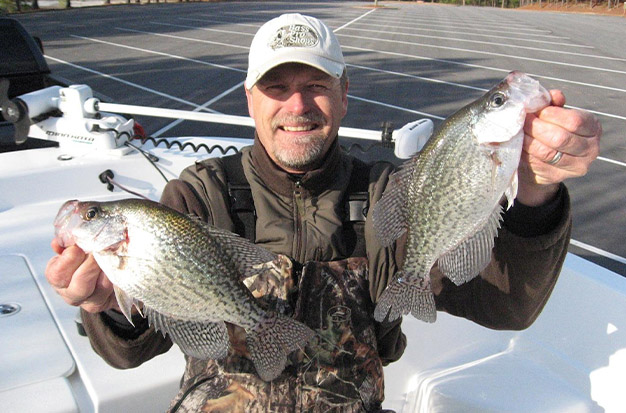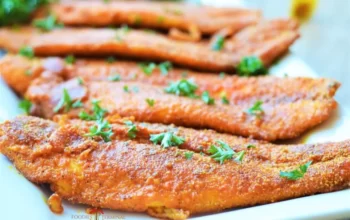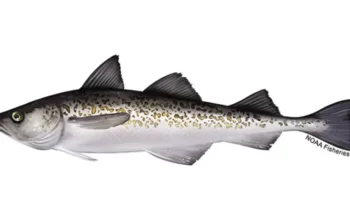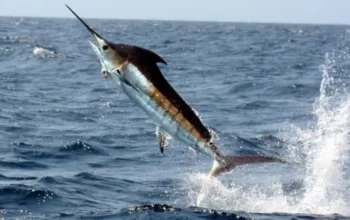A freshwater fish species found in North America that belong to the sunfish family is called a crappie. They have a great reputation for fighting hard despite their size and being incredibly tasty. In fact, many freshwater anglers believe they are the best-tasting freshwater fish available.
The “crappie,” also called “speckled perch,” “strawberry bass,” “white perch,” and “papermouth,” has flaky white meat that can be used in a variety of delectable dishes.
By using your preferred method, searching for structure or deep water, and then subtly presenting your bait, you can catch more crappie. The best baits for crappie fishing are frequently jigs and minnows.
Since crappie have a wide variety of diets and can be caught in a variety of ways, they are a great species for almost any angler to try out using their preferred method.
The fishing methods are the same for both the black crappie and the white crappie, which are two different species of crappie fish.
Crappie fishing can be a bit difficult, especially when trying to catch enough fish for a substantial fish fry. Although many techniques can work, it may initially seem easy to catch crappie. Fortunately, our local experts are on hand to walk you through each step so you can catch more crappie in less time.
Table of Contents
What Is Crappie?
The largest and most recognizable members of the Centrarchidae family of sunfish are crappies. Pomoxis nigromaculatus, the black crappie, and Pomoxis annularus, the white crappie, are the two species. Crappie fishing is very well-liked because both species are regarded as superior food and game fish and have sweet, flaky white meat. In many areas, crappie are abundant, and creel restrictions are frequently lax. When crappie fishing in areas where it is legal, it is not harmful to keep a few fish for a delectable pan-fried meal.
Identification
Both the black crappie and the white crappie have dark spots that range in color from silvery olive to bronze. On the black crappie, however, the spots are arranged erratically rather than in seven or eight vertical bands as they are on the white crappie. Both species have deep bodies and compressed sides. The best way to tell the two species apart is by counting the dorsal fin spines; whereas the white crappie typically has six, the black crappie typically has seven or eight.
Habitat
Compared to white crappie, black crappie prefer waters that are cooler, deeper, clearer, and have a greater abundance of aquatic vegetation. Backwater lakes, sloughs, creeks, streams, lakes, and ponds that are still are included in this. White crappie can be found in slow-moving creeks, lakes, ponds, sand- and mud-bottomed pools, small to large rivers, and creek backwaters. They favor shallower water and can withstand waters that are warmer, more turbid, and slightly alkaline. Usually, they are found close to dropoffs, standing trees, brushy cover, or other man-made cover.
Food
The diet of adult fish includes a lot of small minnows, which also eat the young of many different species of gamefish. Gizzard or threadfin shad are important forage in southern reservoirs, whereas insects rule in northern states. Under the ice, they are very active and continue to feed throughout the winter.
Grouping Behavior
The fact that both species congregate means that if an angler finds one crappie, they are likely to find more nearby. They are active all winter long, but are especially active in the evening and early morning.
Crappie Fishing Basics
- Minnows hide around any kind of brush or weeds to avoid being eaten because crappie are primarily minnow eaters. Concentrate on fishing wherever minnows hide if you want to learn how to catch crappie. Along with wrecked boats, docks, and planted brushpiles, this also includes fallen trees, bushes, old piers, flooded weeds, or shoals covered in moss. When these fail to produce results, try slow-trolling across a lake while drifting with the wind or casting a minnow at various depths until you come across a school of roving crappie.
- Popular crappie baits include small, live minnows. A small leadhead jig with a soft-plastic body that resembles a minnow consistently produces crappie, despite the fact that they are infrequently caught on different plugs (occasionally on a surface lure or a crankbait). Fishing here very slowly is the key. Light line must be used because jigs weighing between 1/64 and 1/16 ounce are frequently better than heavier ones.
- Anglers who target crappies typically use 5- to 5 1/2-foot-long rods and ultralight spinning or spincasting reels with 4- or 6-pound-test line. Cane poles, fiberglass telescoping rods, and fly rods are also common.
Where Can I Get Crappie?
Being widely distributed is one of crappie’s best qualities. Throughout the United States, they live in a variety of rivers, lakes, creeks, and ponds. Crappie can be found all over the Mississippi River watershed, from a lake in Minnesota with clear water to a bayou with muddy water in southern Louisiana. As long as you keep in mind the fundamentals of what habitat game fish gravitate toward, they are also not too difficult to find.
There is a good chance that crappie will be caught in any underwater structures or cover, including offshore brush piles and shoreline laydowns. Weeds, drop-offs, and man-made structures like docks and piers are also good wagers. Crappie will be simple to locate in shallow water during the spring spawn, but it’s important to remember that they travel in schools for the majority of the year, so if you catch one, there are probably many more in the same location. The low-tech, tried-and-true method to locate schools of crappie is to fish likely spots, and when you catch one, work that area diligently. This method can be used if you have a fishfinder on your boat and are proficient with it. When searching for schools of crappie, remember the adage “never leave fish to go find fish” and take the necessary precautions after spotting the first one in a particular area. This will frequently mean the difference between only catching a few fish in the boat and everyone catching their limit.
While ponds, lakes, and marshy areas are often associated with crappie, rivers and streams are also excellent habitat for the fish. I have caught several crappies that were nearly 15” long while smallmouth bass fishing at one of my local rivers, and these were spots with a fairly strong current, so pretty much the last place you would expect to find crappie. Focus on the current seam of rapids, eddies, and close-by submerged timber and log jams if you want to catch crappie in rivers. Pay special attention to any dams, retaining walls, or other man-made structures that may be present. Casting small lures like twister tails and in-line spinners into the areas I just mentioned is the method I’ve found to work best for catching river crappies.
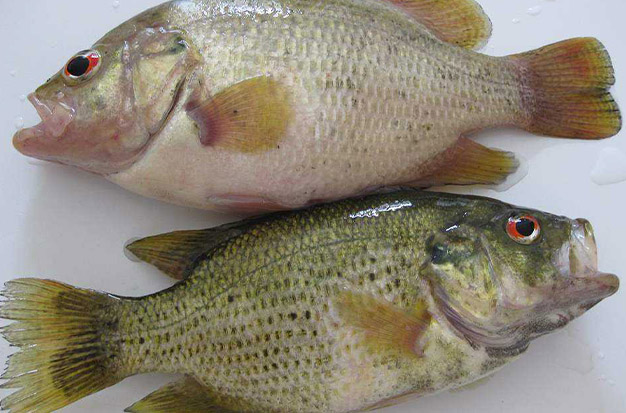
A Step By Step Guide To Catching Crappie
Step One: Choose Your Method
It’s best to know how to get ready for each method in advance because some require different equipment. When an angler changes his or her tactics, different depths, structures, and circumstances might yield better results. The basic tools for several techniques are often carried by successful fishermen, allowing them to modify their baits and strategies in response to the conditions they encounter while out on the water. However, overall, anglers can frequently succeed by either sticking to and perfecting one preferred technique or by varying their tactics depending on the day when crappie fishing.
Bobber And Minnow Rig
The most straightforward technique is frequently the most successful throughout the year—a classic bobber setup above a small minnow setup.
The most effective method is frequently to use a fixed bobber suspended one to two feet above the minnow and attached to an Aberdeen hook size one to two. Anglers can use the minnow unweighted to allow it to swim freely or add a split shot to hold the minnows they use at a specific depth and stop it from swimming around excessively or hanging up in the cover.
This bobber and minnow technique typically works best with a longer rod, typically between 7 feet for casting and 10 or 12 feet for flipping into cover.
Spider Rigging
Using a number of 14–16 inch rods off the front of the boat, anglers can troll minnows or jigs. For those who opt to use the spider rigging technique, rod holders are required to hold the numerous long poles.
Two minnows and two jigs on a number 1 or 2 hook tied at various lengths above a heavy sinker is the most typical spider rigging setup. Depending on the wind, current, or depth, the sinker typically weighs between 1/2 and 1 ounce.
Jig Fishing
Jig fishing is an excellent technique because it can be used to catch fish in a variety of situations. For some lakes, casting and vertically presenting your jig to crappie is an excellent technique. Other times, particularly when the fish are more aggressive near brush piles, it’s best to cast past your target and then retrieve a 1/16 ounce jig with a soft plastic body over the top of the brush pile.
Another technique to try for those fishing from a boat is to position the boat over the brush, drop your jig into the cover, and let it sit in the strike zone until it gets bit.
A medium action 6 1/2 foot rod with a spinning reel and fluorocarbon line weighing 4-6 pounds is the most typical equipment used when fishing jigs.
Shooting Jigs
Shooting or skipping is a different jig fishing technique. Similar equipment is needed for this technique as for the regular jig fishing technique described above, but it works best when the crappie are tucked away under docks or overhanging tree limbs. In order to tuck your bait into the difficult-to-reach places, you basically deliver your jig setup like shooting a bow and arrow.
The best equipment for this method is a 6 1/2 to 7-foot rod with a limber rod tip for loading up a jig to propel with a 4 to 6-pound line that will swirl freely off a spinning reel as the bait shoots towards your target. Because it will skip well when it hits the water, a 1/16 ounce jig is frequently the best choice for shooting bow and arrow-style. When employing this tactic, the size of the jig can be crucial because a 1/8 ounce bait will typically plow hard into the water and a 1/32 ounce bait won’t be heavy enough to pull the line off the reel and reach your target.
To employ this technique, open the bait on your spinning reel, hook the line with your index finger, then grab the hook’s bend and pull to arc the rod tip. Aim your rod slightly downward, then let go of the line with your index finger to send the bait flying in that direction.
Fishing With Crankbaits
The best method for catching large crappie that are suspended in open water is frequently crankbait fishing. If at all possible, use your electronics to locate schools of crappie. Then, troll through the school of fish with a 2-inch medium diving crankbait. Use 4-6 pound fluorocarbon line to make the crankbait dive 10–12 feet. Anglers can use rod holders to troll multiple lures or baits simultaneously, or they can hold a rod to troll a single bait while using one or more other fishing rods. This depends on how many rods you want to use simultaneously.
Step Two: Gather Your Gear
Gear
Crappie fishing used to be as simple as using a cane pole and some line. These days, crappie anglers have their pick of trolling rods that are 14 to 16 feet long, jig poles that are 9 to 10 feet long, or ultralight spinning gear. Additionally, a variety of line options may be effective, from 2-pound test fluorocarbon or monofilament for pressured crappie in clear water to 20–30-pound braid for crappie fishing in timber and other dense structure or deep cover.
In light of the method or methods you have decided to use above, step two is to gather your equipment.
Baits For Catching Crappie
There are many different techniques that can be used, some of which some anglers may find more exciting. A small minnow may be the most well-known technique and can undoubtedly help you catch crappie in respectable numbers.
Many artificial lures, including soft plastics and crankbaits, can entice crappie into biting.
The spider rigging technique, which can be used with a variety of well-liked baits, is the most popular way to catch crappie. Crankbaits, live minnows, and plastic jigs with lead jig heads are some of the most popular and productive crappie baits. So gather your preferred bait or a variety of them for your spider rig, or simply be ready to switch it up in difficult circumstances.
In order to get the crappie to bite their bait, some anglers like to chum the water or dump live bait into it, so if that’s your preferred method, get to work on your chum bucket as well.
Step Three: Know Where To Look
The best spots to catch crappie are typically in or near deep structure or wooded cover. Standing wood, weed beds, and other places where they can feel safe are all fair game for crappie. You should drop an anchor there and cast out your minnow set with a bobber if you come across a submerged log or brush pile.
Anglers frequently discover more fish close to shoreline cypress trees, stickups, weed beds, blowdowns, or cover-button willows. The large crappie are typically found in shallow water near channel edges, close to shallow flats, or on main lake humps. Crappie are typically driven from the shallows into deeper water by cold fronts.
The Spawn
Usually, crappie spawn when the water is between 62 and 65 degrees Fahrenheit. The water clarity will determine the depth at which they spawn. The crappie will probably spawn in areas of 1 to 2 feet of shallow water if the water is stained or muddy. The crappie may be found in areas of deeper water that are 20 feet or deeper in clear water. Most fishermen find success casting quietly close to the shore during the spawning season. Some people prefer to move slowly along the edge with the trolling motor before flipping a small jig into the shallow coastal waters.
It’s frequently successful to fish in the middle of the morning with a fathead minnow, preferably occasionally with a light chop, for post-spawn crappie.
Seasonal Habits
The entire year can be used to catch crappie, and many methods are likely to be effective. Anglers might be able to catch more crappie in less time, though, if they are aware of some seasonal habits.
Rather than loose schools spread across a sizable open area, winter crappie typically congregate in dense, large schools close to structures. During this time, be sure to cast to all sides of the structure because casting to one side may produce nothing, but casting to the other side may result in you landing a tasty panfish on each cast. Additionally, smaller minnows fished with a tiny hook when crappie fishing in cold water may be more effective than a jig.
The best places to catch Fall crappie are docks, where they typically hang out in the top 10 feet of the water column. Catching post-spawn crappie while night fishing is also very successful in many locations.
Shoreline Fishing
Whether you are fishing from a boat or the shore, many of the methods mentioned above can be effective. The fact that many of the best fishing locations are reachable by land is one of the sport’s additional benefits, though. Additionally, many of the most productive, less crowded areas can only be reached from the shore. Finding nearby boat ramps, parks, bridges, and recreational areas that allow access to the shorelines for fishing is thus a good place to start if you want to go shore fishing. Due to the pilings that typically border both sides and the funnel-like structures they provide for panfish, bridges are incredibly productive.
Step Four: Catch Crappie
Utilize your preferred method, look for structure, then be ready for a sudden tug. All ages and levels of fishermen enjoy catching crappie. By learning a variety of techniques and being prepared for when the water temperature changes or you try fishing in a new location, you can stay on top of the circumstances that can alter the habits of the local fish.
Conclusion
You will increase your chances of finding fish and having success on the water by learning crappie patterns. On-the-water experience is superior, though. Take these ideas and put them to use in the water. Bring a notebook, though, and record your own observations as well (such as where you find fish and the temperatures and depths of the water). Crappie fishing is something you can become an expert at in any season with a little time and patience.

